- Home
- Edgar Allan Poe
The Raven (Penguin)
The Raven (Penguin) Read online
THE RAVEN: TALES AND POEMS
EDGAR ALLAN POE’s work defied convention, shocked readers, confounded critics, and awakened the genre of psychological horror. The selection of his writings appearing in The Raven: Tales and Poems demonstrates the astonishing power and imagination with which Poe probed the darkest corners of the human mind. “The Fall of the House of Usher” describes the final hours of a family tormented by tragedy and the legacy of the past. In “The Tell-Tale Heart,” a murderer’s insane delusions threaten to betray him, while stories such as “The Pit and the Pendulum” and “The Cask of Amontillado” explore extreme states of decadence, fear, and hate. The titular narrative poem, perhaps Poe’s most famous work, follows a man’s terrifying descent into madness after the loss of a lover. “Terror is,” as Poe once wrote, “of the soul.” The Raven: Tales and Poems serves as a testament to that conviction.
Penguin Horror is a collection of novels, stories, and poems by masters of the genre that is curated by filmmaker and lifelong horror literature reader Guillermo del Toro. Included in the series are some of his favorites: Frankenstein by Mary Shelley; The Raven: Tales and Poems by Edgar Allan Poe; The Thing on the Doorstep and Other Weird Stories by H. P. Lovecraft; The Haunting of Hill House by Shirley Jackson; Haunted Castles: The Complete Gothic Stories by Ray Russell; and American Supernatural Tales, edited by S. T. Joshi and featuring stories from Ray Bradbury, Joyce Carol Oates, Robert E. Howard, and Stephen King, alongside many others. Penguin Horror reminds us of what del Toro writes in his series introduction: “To learn what we fear is to learn who we are.”
PENGUIN BOOKS
THE RAVEN: TALES AND POEMS
EDGAR ALLAN POE was born on January 19, 1809, in Boston, the son of impoverished actors. Orphaned when he was not yet three, Poe was taken in by John and Frances Allan of Richmond, Virginia. After a major falling-out with his foster father in 1827, Poe left Richmond for Boston, where he published his first book of poetry, Tamerlane and Other Poems. He later published Al Aaraaf, Tamerlane, and Minor Poems (1829) and Poems (1831), and began to write short stories and book reviews, gaining an editorial position at the Southern Literary Messenger in Richmond in 1835. Perhaps already privately married to his thirteen-year-old cousin, Virginia Clemm, Poe married her publicly in May 1836. By this time he had begun work on a novel, The Narrative of Arthur Gordon Pym, early chapters of which were published in the Messenger of January and February 1837. But on January 3, 1837, Poe lost his job (very likely owing to his drinking), and he moved to New York City, where he completed the book. Pym was published by Harper & Brothers on July 30, 1838. Poe had by then moved to Philadelphia, where he served as the editor of two periodicals and where he published a collection of short stories, Tales of the Grotesque and Arabesque (1840), as well as many additional stories, including “The Gold-Bug” and the first modern detective story, “The Murders in the Rue Morgue.” In 1842 Virginia developed tuberculosis. The couple returned to New York in 1844, where Poe soon reached the peak of his fame with the publication of “The Raven” in 1845. That year also saw the publication of both Tales and The Raven and Other Poems, but Poe’s drinking led to the failure of his literary weekly, the Broadway Journal. Poe and his wife settled in Fordham, New York, where Poe continued to write and to care for Virginia until she died in January 1847. In his final years, Poe wrote some of his most celebrated poetry, including “The Bells,” “Eldorado,” and “Annabel Lee.” On October 7, 1849, Edgar Allan Poe died in Baltimore.
GUILLERMO DEL TORO is a Mexican director, producer, screenwriter, novelist, and designer. He both cofounded the Guadalajara International Film Festival and formed his own production company—the Tequila Gang. However, he is most recognized for his Academy Award–winning film, Pan’s Labyrinth, and the Hellboy film franchise. He has received Nebula and Hugo awards, was nominated for a Bram Stoker award, and is an avid collector and student of arcane memorabilia and weird fiction.
S. T. JOSHI is a freelance writer and editor. He has edited Penguin Classics editions of H. P. Lovecraft’s The Call of Cthulhu and Other Weird Stories and The Thing on the Doorstep and Other Weird Stories, as well as Algernon Blackwood’s Ancient Sorceries and Other Strange Stories, Arthur Machen’s The White People and Other Weird Stories, and American Supernatural Tales. He has also written critical studies on Lord Dunsany and H. P. Lovecraft; edited works by Ambrose Bierce, Clark Ashton Smith, and H. L. Mencken; and completed a two-volume history of supernatural fiction entitled Unutterable Horror.
THE
RAVEN
Tales and Poems
Edgar Allan Poe
PENGUIN HORROR
Series Editor Guillermo del Toro
Introduction by S. T. Joshi
PENGUIN BOOKS
Published by the Penguin Group
Penguin Group (USA) LLC
375 Hudson Street
New York, New York 10014
USA | Canada | UK | Ireland | Australia | New Zealand | India | South Africa | China
penguin.com
A Penguin Random House Company
This selection first published in Penguin Books 2013
Introduction copyright © S. T. Joshi, 2013
Series introduction copyright © Necropia, Inc., 2013
Selection copyright © Penguin Group (USA) LLC, 2013
Penguin supports copyright. Copyright fuels creativity, encourages diverse voices, promotes free speech, and creates a vibrant culture. Thank you for buying an authorized edition of this book and for complying with copyright laws by not reproducing, scanning, or distributing any part of it in any form without permission. You are supporting writers and allowing Penguin to continue to publish books for every reader.
LIBRARY OF CONGRESS CATALOGING-IN-PUBLICATION DATA
Poe, Edgar Allan, 1809–1849.
[Works. Selections]
The Raven : tales and poems / Edgar Allan Poe.
Pages cm.— (Penguin Horror)
“Series editor Guillermo del Toro, Introduction by S. T. Joshi.”
ISBN: 9781101662762
I. Toro, Guillermo del, 1964– II. Joshi, S. T., 1958– III. Title.
PS2602 2013
818’.309—dc23
2013022354
Version_2
CONTENTS
Haunted Castles, Dark Mirrors: On the Penguin Horror Series
by GUILLERMO DEL TORO
Introduction by S. T. JOSHI
A Note on Texts
THE RAVEN
TALES
Metzengerstein (1832)
MS. Found in a Bottle (1832)
Shadow—A Parable (1833)
Silence—A Fable (1833)
Berenicë (1835)
Morella (1835)
Ligeia (1838)
The Fall of the House of Usher (1839)
William Wilson (1839)
The Conversation of Eiros and Charmion (1839)
The Man of the Crowd (1840)
A Descent into the Maelström (1841)
The Colloquy of Monos and Una (1841)
Eleonora (1841)
The Oval Portrait (1842)
The Masque of the Red Death (1842)
The Pit and the Pendulum (1842)
The Tell-Tale Heart (1842)
The Black Cat (1842)
The Premature Burial (1844)
Some Words with a Mummy (1844)
The Imp of the Perverse (1845)
The Facts in the Case of M. Valdemar (1845)
The Cask of Amontillado (1846)
Hop-Frog (1849)
POEMS
Dreams (1827)
Spirits of the Dead (1827/1829)
A Dream (1827)
Sonnet—To Science (1829)
Fairy-Land (1829)<
br />
[Alone] (1829)
Fairy Land [II] (1831)
The Valley of Unrest (1831/1845)
The City in the Sea (1831/1845)
Sonnet—Silence (1839)
Lenore (1843/1844)
Dream-Land (1844)
The Raven (1844)
Ulalume—A Ballad (1847)
The Bells (1848/1849)
A Dream within a Dream (1849)
For Annie (1849)
Eldorado (1849)
Annabel Lee (1849)
HAUNTED CASTLES, DARK MIRRORS
ON THE PENGUIN HORROR SERIES
There is no god but this mirror that thou seest, for this is the Mirror of Wisdom. And it reflecteth all things that are in heaven and on earth, save only the face of him who looketh into it. This it reflecteth not, so that he who looketh into it may be wise.
—Oscar Wilde, “The Fisherman and His Soul”
To learn what we fear is to learn who we are. Horror defines our boundaries and illuminates our souls. In that, it is no different, or less controversial, than humor, and no less intimate than sex. Our rejection or acceptance of a particular type of horror fiction can be as rarefied or kinky as any other phobia or fetish.
Horror is made of such base material—so easily rejected or dismissed—that it may be hard to accept my postulate that within the genre lies one of the last refuges of spirituality in this, our materialistic world.
But it is a fact that, through the ages, most storytellers have had to resort to the fantastic in order to elevate their discourse to the level of parable. Stevenson, Wilde, Victor Hugo, Henry James, Marcel Schwob, Kipling, Borges, and many others. Borges, in fact, defended the fantastic quite openly and acknowledged fable and the parable as elemental forms of narrative that would always outlive the much younger forms, which are preoccupied with realism.
At a primal level, we crave parables, because they allow us to grasp the impossibly large concepts and to understand our universe without and within. These tales can “make flesh” what would otherwise be metaphor or allegory. More important, the horror tale becomes imprinted in us at an emotional level: Shiver by shiver, we gain insight.
But, at its root, the frisson is a crucial element of this form of storytelling—because all spiritual experience requires faith, and faith requires abandonment: the humility to fully surrender to a tide of truths and wills infinitely larger than ourselves.
It is in this abandonment that we are allowed to witness phenomena that go beyond our nature and that reveal the spiritual side of our existence.
We dislocate, for a moment, the rules of our universe, the laws that bind the rational and diminish the cosmos to our scale. And when the world becomes a vast, unruly place, a place where anything can happen, then—and only then—we allow for miracles and angels, no matter how dark they may be.
Penguin has a particularly important place in my own relationship with the fantastic. When I was a child—roughly seven years old—I started purchasing and collecting fantastic literature. My first purchases were paperbacks, and the two main purveyors of my collection were, almost inevitably, Editorial Bruguera in Spanish and Penguin Books in English. As a kid, I was so grateful to have these short story collections and novels in an affordable—albeit fragile—format. Reading these tales at such an early age most definitely shaped me into whatever manner of creature I am today.
The discovery of the horror tale at such an early age was fortuitous for me. This sort of tale serves, in many ways, the very same purpose as fairy tales did in our childhood: It operates as a theater of the mind in which internal conflicts are played out. In these tales we can parade the most reprehensible aspects of our being: cannibalism, incest, parricide. It allows us to discuss our anxieties and even to contemplate the experience of death in absolute safety.
And again, like a fairy tale, horror can serve as a liberating or repressive social tool, and it is always an accurate reflection of the social climate of its time and the place where it gets birthed.
In the eighteenth century, Romanticism—and with it, the Gothic tale—surged as a reaction against the suffocating dogmas of enlightenment. Empiricism weighed heavily upon our souls so, as the age of reason went to sleep, it produced monsters. Reason and science were being enthroned when the Gothic Romance exploded full of emotion and thrills. “The great art of life is sensation, to feel that we exist, even in pain,” said Lord Byron, enunciating a basic Romantic idea and, perhaps, hoping that goblins, ghosts, and demons provided some necessary release to a puritanical society.
The Gothic has its sights planted firmly in the past because it is there that ghosts reside. Romanesque ruins evoke, with their incomplete grandeur, the will that built them and the echoes they left behind. The innate necrophilia subjacent in the Gothic spirit is made manifest as a tribute to the eternal notion of love.
The enormous popularity of this genre produced a deluge of inferior titles and sub–Minerva Press imitations; its elements became so well-known as to be somewhat parodied in Jane Austen’s Northanger Abbey (created in direct response to Ann Radcliffe’s Gothic novels) or, more obliquely, in the Don Quixote of the Gothic genre: The Monk, by Matthew G. Lewis.
Toward the end of its run, the Gothic’s resistance to modernity gave way to a new set of devices—it began to utilize the shiny artifices of science, psychology, and other avant-garde tools to lend plausibility to its phantoms.
And it is at this point that the modern horror tale, in the hand of young, skillful, and powerful writers, starts evolving from its Gothic roots and delivers bold, very experimental works that shape the language in exciting and innovative ways.
Much like Matthew G. Lewis, who was twenty years old when he wrote The Monk, Mary Shelley was painfully young—a teenager, in fact—when she first published Frankenstein, or the Modern Prometheus and into the monster and his tale she was able to pour all her contradictions and her questions—her essential pleas and her feelings of disfranchisement and inadequacy. The tale spoke about such profound, particular feelings that, irremediably, it became universal.
While reading the novel as a child, I was arrested by the epistolary form Shelley had chosen (and which Dracula would use to good effect many decades later), because it felt so immediate. I was overtaken by the Miltonian sense of abandonment, the absolute horror of a life without a reason. The tragedy of the tale was not dependent on evil. That’s the supreme pain of the novel—tragedy requires no villain.
Just as Poe will prefigure the ambiguities of psychiatry, Shelley utilizes the most cutting-edge science and philosophy to drive her existential discourse home. Galvanism, chemistry, and surgery provide the alibi for the monster to gain life and to arise and question all of us.
The Faust-like thirst for knowledge and the arrogance of science are embodied in the character of Victor. He becomes an uncaring god who can force dead flesh to be reanimated but cannot calculate the consequences of his creation. This leads to the infinite sorrow of his creation, who will experience the hunger, the loneliness, and the burden of existence, far removed from its creator.
And the Creature, like the wolf of St. Francis, wanders through the world, encounters mostly evil and hatred, and learns of rage and pain. He becomes hardened and lonely. And I, at age ten, in a comfortable house in a suburb, felt exactly the same way. Shelley goes deeper than many authors by refusing to impose a pattern of good and evil only as discourse (like Stevenson’s “Markheim” or Poe in “William Wilson”), but by actually weaving it into the plot.
The unnatural essence of the Creature is defined by his origins—by the god that gave him life. Because Victor not only usurps the divine function of God, but also that of intercourse. Victor is barren and alone when he creates the Creature, and their final encounter brings it all full circle—they finally meet in a desolate, frozen landscape, which provides the perfect theater for the colloquy between the arid God and the abandoned Man.
In usurping the role of God, Victor is also face
d with questions and reproach that far exceed his paternal capabilities and ultimately allow the Creature to see him, too, as just a man. Another abandoned man. So, as the tale ends, and as his god dies a simple man, the Creature will fade into the cold limbo with the sole desire to die himself. To be no more. Remote as Victor may have been, he was the only thing that gave sense to the Creature’s life, and with him gone, only oblivion remains.
Frankenstein is the purest of parables—working both as a straight narrative and as a symbolic one. Shelley utilizes the Gothic model to tell a story not about the loss of a paradise but rather about the absence of one.
The novel is so articulate and vibrant that it often surprises those who approach it for the first time. No adaptation—and there are some masterful ones—has ever captured it whole.
Taking its rightful place among the essential characters in any narrative form, Frankenstein’s Creature will go beyond literature and will join Tarzan, Sherlock Holmes, Pinocchio, and Monte Cristo in embodying a concept, even in the minds of those who have never read the actual books.
Clearly, the horror tale deals with the essential duality of mankind, a topic that has proved irresistible to philosophers, prophets, and saints. The Adamites, the Dulcinians, and other savage orders advocated salvation through Bosch-like excess and violence—and they all situated the root of all evil in the soul. It is not until Poe that the seat of evil is transferred back to its proper place: the human mind.
It is in Poe that we first find the sketches of modern horror while being able to enjoy the traditional trappings of the Gothic tale. He speaks of plagues and castles and ancient curses, but he is also morbidly attracted to the aberrant intellect, the mind of the outsider.

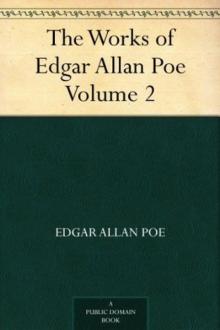 The Works of Edgar Allan Poe — Volume 2
The Works of Edgar Allan Poe — Volume 2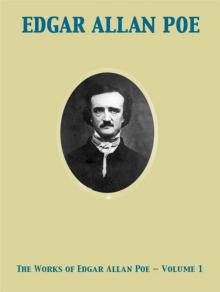 The Works of Edgar Allan Poe — Volume 1
The Works of Edgar Allan Poe — Volume 1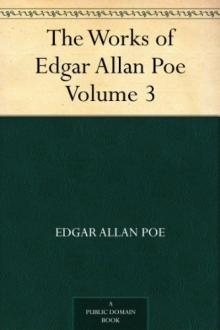 The Works of Edgar Allan Poe — Volume 3
The Works of Edgar Allan Poe — Volume 3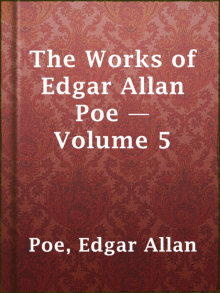 The Works of Edgar Allan Poe — Volume 5
The Works of Edgar Allan Poe — Volume 5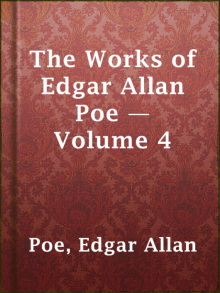 The Works of Edgar Allan Poe — Volume 4
The Works of Edgar Allan Poe — Volume 4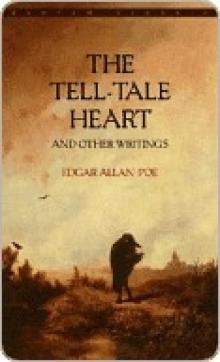 The Tell-Tale Heart
The Tell-Tale Heart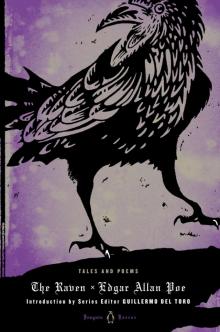 The Raven (Penguin)
The Raven (Penguin)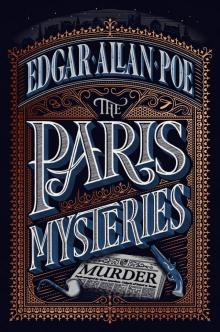 The Paris Mysteries
The Paris Mysteries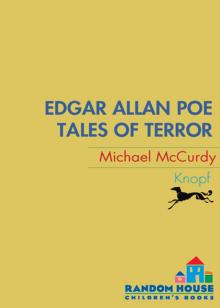 Tales of Terror from Edgar Allan Poe
Tales of Terror from Edgar Allan Poe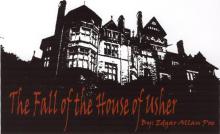 The Fall of the House of Usher
The Fall of the House of Usher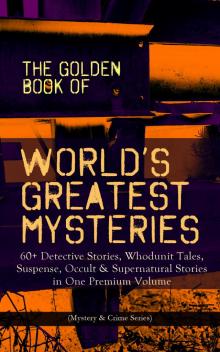 The Golden Book of World's Greatest Mysteries
The Golden Book of World's Greatest Mysteries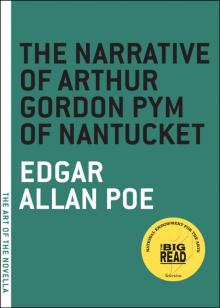 The Narrative of Arthur Gordon Pym of Nantucket
The Narrative of Arthur Gordon Pym of Nantucket Ligeia
Ligeia The Landscape Garden
The Landscape Garden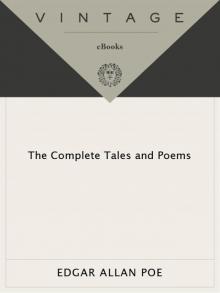 Complete Tales & Poems
Complete Tales & Poems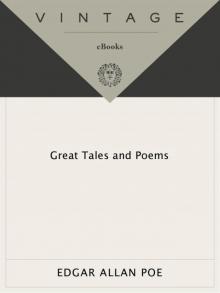 Great Tales and Poems of Edgar Allan Poe
Great Tales and Poems of Edgar Allan Poe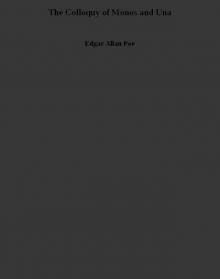 The Colloquy of Monos and Una
The Colloquy of Monos and Una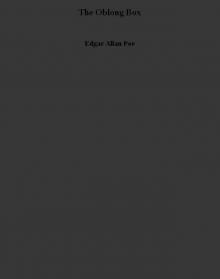 The Oblong Box
The Oblong Box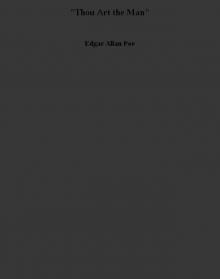 Thou Art the Man
Thou Art the Man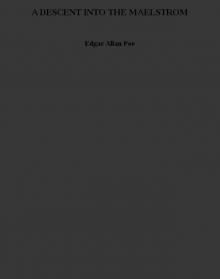 A DESCENT INTO THE MAELSTROM
A DESCENT INTO THE MAELSTROM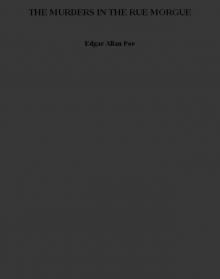 THE MURDERS IN THE RUE MORGUE
THE MURDERS IN THE RUE MORGUE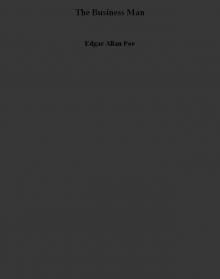 The Business Man
The Business Man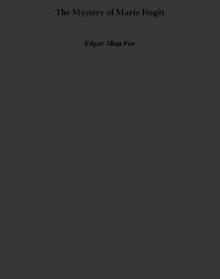 The Mystery of Marie Rogêt
The Mystery of Marie Rogêt Metzengerstein
Metzengerstein The Man That Was Used Up
The Man That Was Used Up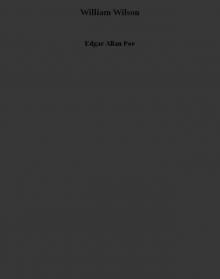 William Wilson
William Wilson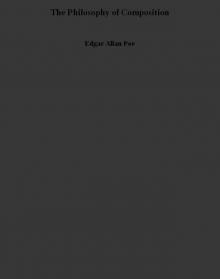 The Philosophy of Composition
The Philosophy of Composition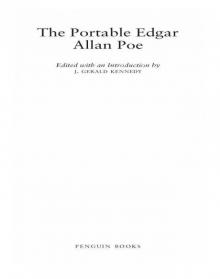 The Portable Edgar Allan Poe
The Portable Edgar Allan Poe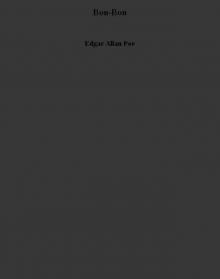 Bon-Bon
Bon-Bon A Predicament
A Predicament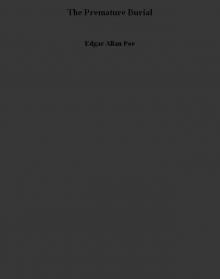 The Premature Burial
The Premature Burial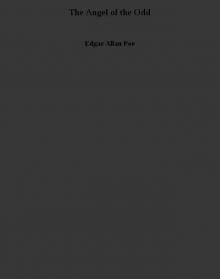 The Angel of the Odd
The Angel of the Odd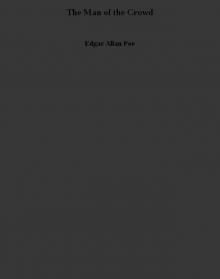 The Man of the Crowd
The Man of the Crowd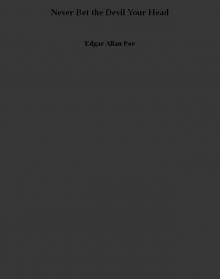 Never Bet the Devil Your Head
Never Bet the Devil Your Head The Tell-Tale Heart and Other Writings
The Tell-Tale Heart and Other Writings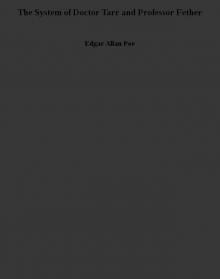 The System of Doctor Tarr and Professor Fether
The System of Doctor Tarr and Professor Fether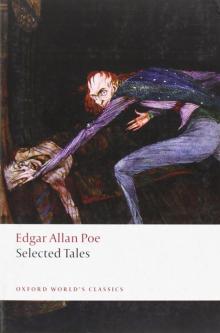 Selected Tales (Oxford World's Classics)
Selected Tales (Oxford World's Classics) Essential Tales and Poems of Edgar Allan Poe (Barnes & Noble Classics Series)
Essential Tales and Poems of Edgar Allan Poe (Barnes & Noble Classics Series)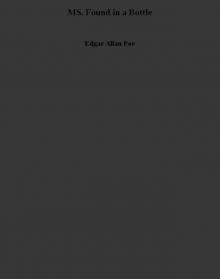 MS. Found in a Bottle
MS. Found in a Bottle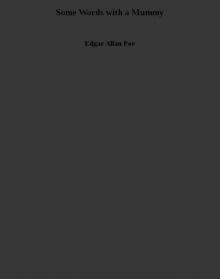 Some Words with a Mummy
Some Words with a Mummy The Science Fiction of Edgar Allan Poe (Penguin Classics)
The Science Fiction of Edgar Allan Poe (Penguin Classics) King Pest
King Pest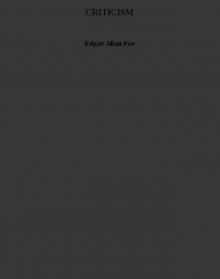 CRITICISM
CRITICISM How to Write a Blackwood Article
How to Write a Blackwood Article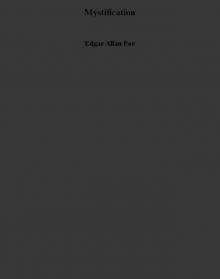 Mystification
Mystification Diddling Considered as One of the Exact Sciences
Diddling Considered as One of the Exact Sciences Steampunk Poe
Steampunk Poe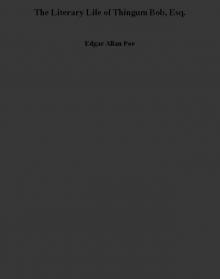 The Literary Life of Thingum Bob, Esq.
The Literary Life of Thingum Bob, Esq.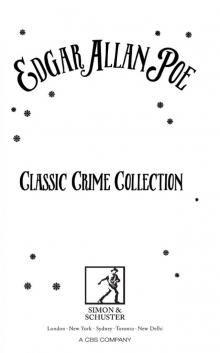 Classic Crime Collection
Classic Crime Collection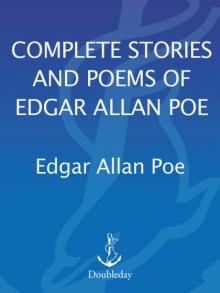 Complete Stories and Poems of Edgar Allen Poe
Complete Stories and Poems of Edgar Allen Poe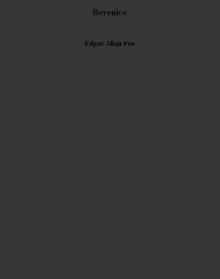 Berenice
Berenice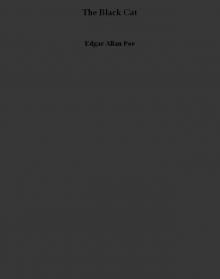 The Black Cat
The Black Cat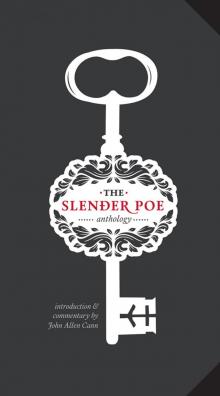 The Slender Poe Anthology
The Slender Poe Anthology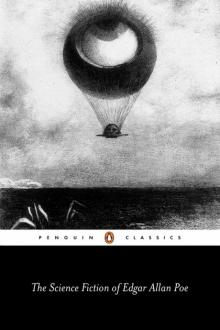 The Science Fiction of Edgar Allan Poe
The Science Fiction of Edgar Allan Poe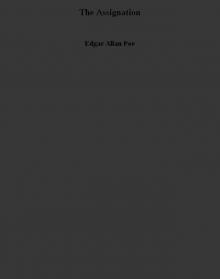 The Assignation
The Assignation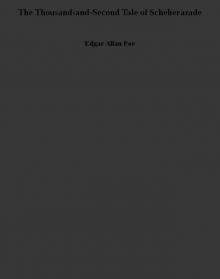 The Thousand-and-Second Tale of Scheherazade
The Thousand-and-Second Tale of Scheherazade The Raven and Other Short Stories
The Raven and Other Short Stories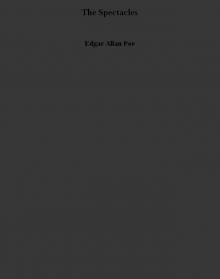 The Spectacles
The Spectacles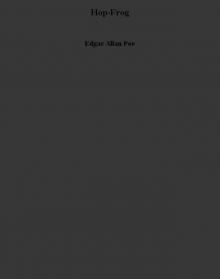 Hop-Frog
Hop-Frog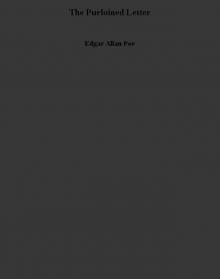 The Purloined Letter
The Purloined Letter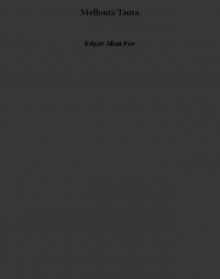 Mellonta Tauta
Mellonta Tauta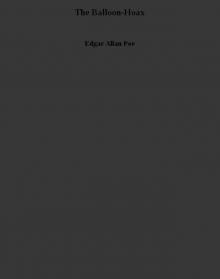 The Balloon-Hoax
The Balloon-Hoax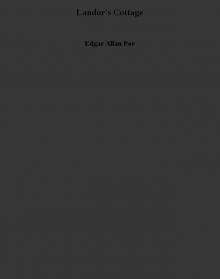 Landor's Cottage
Landor's Cottage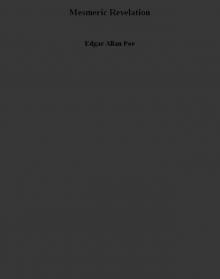 Mesmeric Revelation
Mesmeric Revelation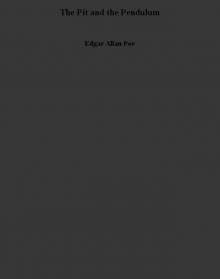 The Pit and the Pendulum
The Pit and the Pendulum